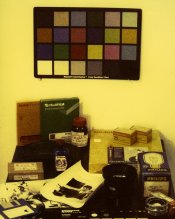holmburgers
Member
Haha.
Experimentation then... I see
Well in my view camera I don't have a focal plane shutter nor a pressure plate. I need a junk film holder so I can carve out bigger tracks to accomodate 2 films, that might cut down on my "buckling" problem.
Swash buckling that is...
"Aye" myself. I'm tired... no more thinking today...
Experimentation then... I see

Well in my view camera I don't have a focal plane shutter nor a pressure plate. I need a junk film holder so I can carve out bigger tracks to accomodate 2 films, that might cut down on my "buckling" problem.
Swash buckling that is...
"Aye" myself. I'm tired... no more thinking today...





